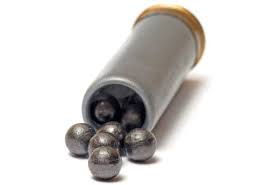Chemycal has been acquired by 3E
Learn MoreChemycal has been acquired by 3E
Learn MoreDiscover how Chemycal PRO helps you boosting your regulatory monitoring:

Lead shot has been widely used for decades in hunting and sports shooting. Yet, we know that lead has toxic effects on ecosystems and wildlife. This is why the EU is looking into restricting its use in wetlands in the near future.
What is the issue?
European wetlands are a habitat for numerous species of waterbirds, including wildfowl like ducks and geese. Hunting them on wetlands with lead gunshot is associated with lead poisoning in wildlife.
This poisoning arises after waterbirds ingest spent lead gunshot that they find on the ground or in water after mistaking it either for food or for small stones (called grit) that they swallow to help them digest their food.
Scavenging birds that feed on unretrieved waterbirds killed using lead gunshot can also consequently suffer from lead poisoning. After the lead gunshot is ingested, it is ground down into small pieces in the bird's gizzards (a muscular digestive organ unique to birds). These pieces are then absorbed from the gut and into bird's tissues. As lead is highly toxic, this frequently results in birds dying through lead poisoning. Depending on the quantity of lead ingested, death can occur soon after the shot has been consumed or after a period of two to three weeks. Ingestion of a single lead shot can cause the death of a small duck. Where lead poisoning is not fatal, it can also cause harmful, sub-lethal effects on reproduction and the immune system.
The amount of lead released into EU wetlands due to hunting has been estimated to be around 4 000 tonnes per year. Sports shooting in wetlands contributes an additional amount, although this is difficult to precisely assess.
CONTINUE READING ON newsletter.echa.europa.eu
2013 © MyChemicalMonitoring. ALL Rights Reserved. About Us | Terms and Conditions